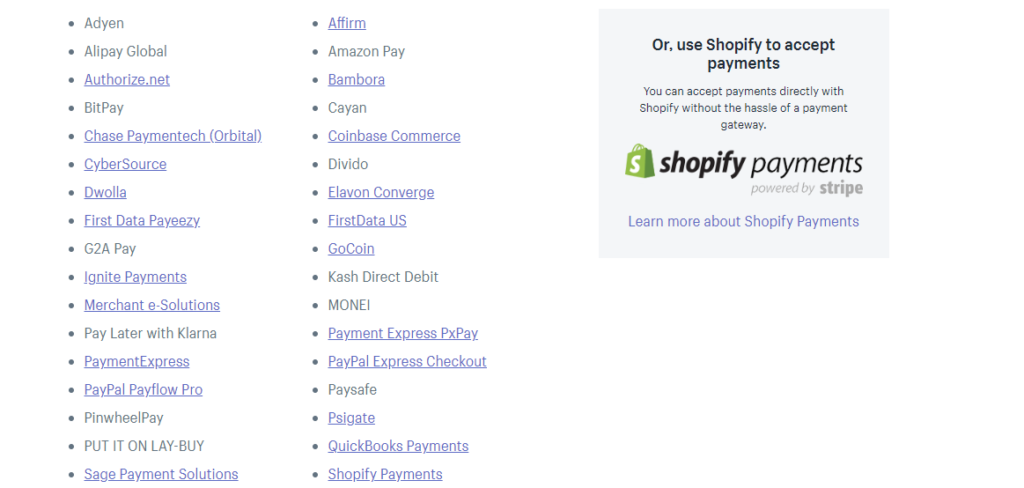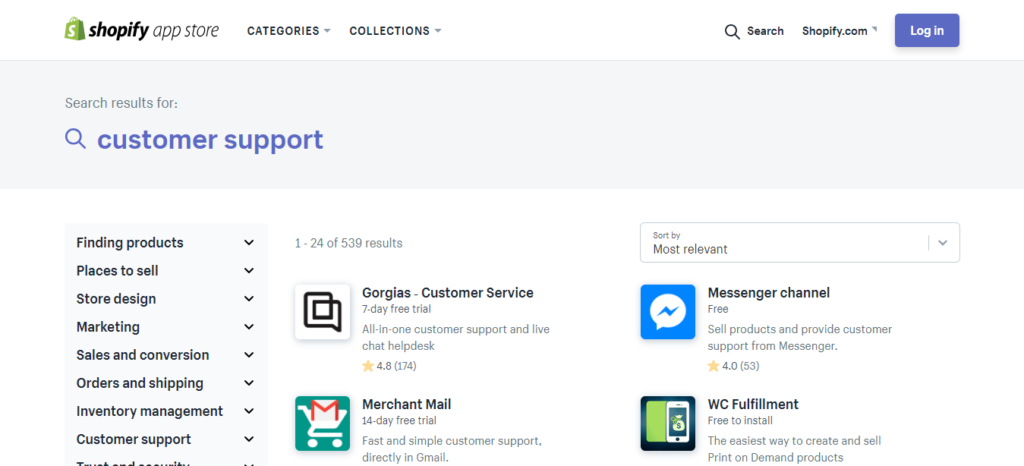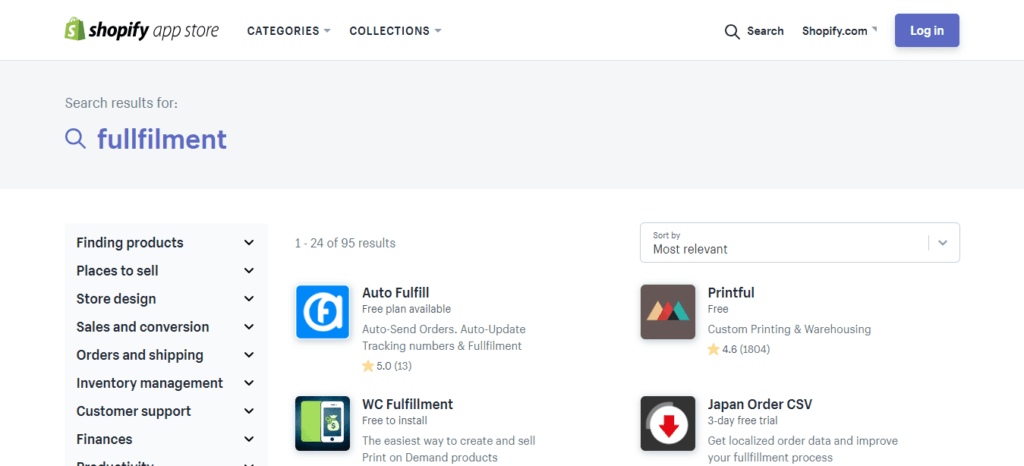Shopify Vs Amazon – Where to sell your products?
- Aug-22-2018
- Dilawar Hussain
- 0 comments
There has always been a big question mark when it comes to using different ecommerce platforms. Especially newcomers often wonder whether it’s a good idea to go with Amazon or Shopify for their ecommerce venture.
In this Shopify vs Amazon comparison, we are going to dive deep into both these platforms, their features, top differences, and what makes each platform unique.
We are also explore whether it’s an even better option to sell on both these platforms (since Shopify integrates with Amazon easily now). So, let’s go ahead and see which platform is the perfect one for you when it comes to Shopify vs Amazon.
Shopify Vs Amazon – Top Differences
So, we’re are going to break down Amazon and Shopify to compare them on different aspects. We will not only include our personal opinions but also include what the general opinion of the community is for each factor.
| Category | Shopify | Amazon |
| Pricing | Much cheaper in the long run. | Much more expensive than Shopify. |
| Branding | Create and promote your own brand. | No branding options. |
| Customer Trust | Difficult to acquire customer trust. | Amazon provides you with instant credibility. |
| Payment Methods | A large number of payment methods available. | Limited payment methods only. |
| Customer Support | Difficult for newcomers to offer quality customer support. | Amazon’s customer support team takes care of all the queries for you. |
| Fulfillment | No native fulfillment service. | Fulfillment by Amazon is available for a cost. |
| Limitations | Very few or no limitation as to what you can do. | You are always limited by Amazon’s marketplace rules. |
| Profit Margin | Higher profit margins. | Low profit due to different fees. |
| Experimentation | Easy to experiment. | No room for you to experiment. |
| Marketing | Difficult to market your products and store. | Amazon provides free exposure with their millions of visitors. |
Shopify Pros and Cons
Pros
- Built-in domain hosting and data security
- Features and apps to optimize an online store
- 24/7 top-notch customer support
- Features for blogging to boost SEO and content marketing
- Multiple templates and design to customize the store
- Brighter chance to make a brand by having complete ownership of your store
Cons
- Its basic plan comes at $29 per month that may be considered as expensive for newbies
- It had to get viewers without paid marketing
Amazon Pros and Cons
Pros
- The seller can leverage from the large and the credibility of Amazon
- Excellent after-sales services and customer support
- No need to worry about keeping, packaging and delivery of stock
- Easy to access the potential customer by getting more exposure
Cons
- Bound by policies, terms and conditions of Amazon
- Cannot build a brand of your product
- Profit cuts due to multiple fees charged
Pricing
So, first of all, we are going to see how both these platforms fare against each other when it comes to pricing. Shopify is a standalone ecommerce platform provider that lets you build your own store while Amazon is one of the biggest marketplaces where you can sell your products. Both platforms are different, but newcomers often want to know whether one platform is better than the other when it comes to starting an online business.

When it comes to pricing, Shopify does come out on top in the long run when compared to Amazon FBA (fulfillment by Amazon). This is based on the fact that you are managing your inventory yourself without having to invest a large amount in it.
If you have a very massive product catalog with a huge inventory then a fulfillment service like Amazon FBA is going to be much cheaper with the convenience that it provides.
However, for small to mid-size businesses managing inventory by themselves shouldn’t be a problem. It should be much cheaper when compared to Amazon FBA which charges you for storage on per cubic feet of space you use and duration basis.
When we compare the monthly charges of Amazon and Shopify then it comes down to what type of account you have.
Shopify’s cheapest plan comes down to $9 per month, but it severely lacks the features. It basically only lets you sell through your own channel like Facebook shop, etc and doesn’t provide a standalone store.
Amazon’s free seller account doesn’t charge you any monthly fee but charges you $0.99 (and other transaction fees) on each sale.
Check out how much Shopify costs to see if it fits your budget.
Transaction Fees
Both Shopify and Amazon have transaction fees that are added on top of your monthly subscription bill.
Shopify charges you around 2% on each sale (if you are not using Shopify Payments) while Amazon has much heftier charges, which include Referral fees (anywhere from 8% to 15%) and Variable closing fees (that are applicable on all products under “Media” category).
So, if you look at it logically, Amazon charges you a bit more when it comes to transaction fees. Overall, it’s much cheaper to use Shopify as your own ecommerce platform instead of Amazon.
Branding
This one is for people who are actually interested in building their own brand. Branding is an important option that differentiates both these platforms. If you are looking to build a brand around your eCommerce venture then Shopify is the best option. Since you get to create your own store with a personal description, product pages, logo, etc, Shopify makes it easier to create and raise brand awareness.

Amazon, on the other hand, does not provide you with many tools to create your own identity or brand. You will always be just another seller on Amazon’s platform and buyers will only see that they are buying from Amazon. Buyers on Amazon don’t care about who the seller is because they only want to buy from Amazon. You can make money with Amazon, but you will not be able to build a brand by selling on Amazon.
So, Shopify is a perfect choice if you want to create and promote your own brand.
Customer Trust
One of the most common questions that I see posted in the community is that “Why people will buy from your store instead of Amazon?”
This is a valid question. People are not going to trust you with their hard earned money if they don’t actually trust your brand. This is where Shopify can prove to be a liability for newcomers.
As a newcomer, you will not have much social proof. You will be a new store with little to no reviews at all. This can be off-putting for potential buyers as they are not sure about your product quality, service, shipping timings, etc. However, if you are already an established brand then they will have no problems buying from you, but that’s going to take some time.
Amazon provides you with instant trust. If you are selling on Amazon then you don’t have to worry about earning a customer’s trust because they already trust Amazon. They know if anything goes wrong, Amazon will reimburse them in any way possible. So, you can sell easily without having to worry about customer trust or social proof on the platform.
Acquiring social proof on Shopify can be a daunting and time-consuming task, but once done it can be a goldmine.
Amazon lets you instantly gain the trust of buyers by attaching Amazon’s name with your products.
Payment Methods

This is where Shopify completely outshines Amazon. Since Amazon is a marketplace, it only offers a limited number of payment methods. Mainly, Amazon Payments and Credit/Debit cards are allowed on Amazon as payment methods. So, people who are on the platform have to use these methods to pay for their stuff. PayPal on Amazon is also not a viable payment method which can lead to some buyers not buying from the platform.

Shopify lets you offer any number of different Payment methods on your online store. These include PayPal, Stripe, and many other third-party payment providers that you want to offer on your store.
So, if you want to offer your visitors a decent choice of payment methods then Shopify is the way to go.
Customer Support
This is another option that requires you to consider a lot of factors. If you just started a Shopify store and have a small business going on then it’s obvious that you don’t have (and can not afford) a 24/7 customer support team available via multiple channels.
You probably answer to queries by yourself at a specific time of the day. This can often be frustrating for customers as they’ve come to expect a highly responsive and effective customer support from online stores. However, once you grow your Shopify store and actually get a customer support staff then it’s pretty much smooth sailing, however, that’s going to take some time for newbies.

Shopify does offer a bunch of apps that help you create a streamlined customer support process. These apps provide your customers with multiple ways to reach out to you through email, text, or phone. You can offer live chat or email support using any of Shopify apps available in the category.
Amazon lets you utilize their customer support team (which is one of the best) when you start selling on the platform. Almost all of the queries are handled by their support team and only a select few are forwarded to the seller. So, customers can always expect the best customer service when they are buying through Amazon.
Fulfillment
Amazon offers fulfillment service through its FBA program which means they can store, manage, and ship your products for you without you having to do any work. It costs extra but provides you with the convenience of not having to worry about all the inventory, storage space, and logistics.

Shopify does not have any fulfillment service of its own. You can integrate Shopify with third-party fulfillment services which include Amazon FBA as well along with others like ShipWire, etc. You have to pay extra for the fulfillment service on top of Shopify’s costs.
If you have a large catalog of products and inventor then it’s better to choose a fulfillment service to manage the inventory and logistics for you, however, if you only have a few products then you can easily manage them yourself. It all boils down to how much work you want to put into the fulfillment or not.
As an added bonus, Shopify also offers Oberlo as a simple integration app. Oberlo takes care of all the fulfillment for you and turns your online store into a dropshipping business within minutes of setting it up. Oberlo lets you import products from AliExpress and their Verified supplier listings, you can sell these products for a profit while Oberlo takes care of the inventory, order management, and delivery of your orders. Read our Oberlo review for more information.
Limitations
As we already know Amazon limits you to certain things that you can and can not do. You can not customize the product pages, you can not add extra payment methods, you can not add your logo or branding, etc.
Shopify does not have any limitation since you basically own the store. You can do whatever you want as long as it adheres to Shopify terms of use. However, Shopify does have some technical limitations. There are a quite bunch of features that you can only access by using a third-party app which include, but not limited to extensive bookkeeping, fulfillment, customer service, etc.
Amazon also limits you to only sell certain types of products in a few categories if you are using the free seller account. Also, Amazon can ban/restrict your account for any reason they want without giving you any prior warnings. So, there are more limitations on Amazon then there are on Shopify.
Profit Margins
Amazon takes a big bite out of your profits with its fees. Transaction fees like referral fee, variable closing fee eat into your profits and there are no ways to avoid these fees.
Shopify also charges you a minimum of 0.5% transaction fee (on the Advanced Shopify plan), but these transaction fees can be bypassed if you are using their native payment method, Shopify Payments on your online store.
Experimentation
Shopify allows you all the freedom you need to experiment with your store. Since you basically own the store, there is no one stopping you from experimenting with the design, product pages, checkout pages, etc. You can completely revamp the design as you see fit.
Amazon limits your experimentation to a certain level. You can still add descriptions and customize product title and images, but there is nothing else that you can do. You can not change the placement of the Buy Now button or change the page’s layout. So, you are pretty much restricted to using what Amazon provides.
Marketing
This is where Amazon outshines Shopify. With Shopify, you need to promote your store by yourself, be it paid promotion with Facebook and Google Ads, or free promotion through Social media and other communities, you have to put in all the efforts yourself to bring in traffic to your store.
Amazon receives millions of visitors on a daily basis, so you get potential millions of customers. Not all of them are going to buy your product, but everyone who’s interested in buying the product you sell will end up buying it since they’ve already made up their mind to purchase from Amazon. So, you get free traffic and exposure for your products with Amazon.
Shopify Vs Amazon – Which Platform is Better for Dropshipping?
Without a single doubt, Shopify is the best platform for dropshipping. Couple it with a service like Oberlo and you get an almost automated dropshipping store that sells whatever you want without you having to put in effort into inventory management or logistics at all.
Amazon doesn’t even allow traditional dropshipping at all. FBA requires you to send your inventory over to Amazon warehouse before you start selling on Amazon, but you can try dropshipping on Amazon with a regular seller account on Amazon.
However, if you are dropshipping from China, you will receive a lot of negative reviews and probably boot from Amazon because of very high shipping timings. Amazon thrives on providing the quickest shipping times and if you provide products with high shipping times then you’re going to be on Amazon’s bad side.
So, it’s a safer and much better idea to dropship with Shopify since you can dictate the terms yourself.
Shopify Vs Amazon – Conclusion
You can take advantage of Amazon’s huge amount of traffic, but it also comes with the downsides of competing in a crowded space and very limited brand recognition.
Here’s a simple analogy.
Amazon is like a major retail store (BestBuy, Walmart, etc.) where you get some shelf space while Shopify is like having your own small yet cool shop at the corner.
Amazon is still a decent-fit for newcomers that are not sure how to start and manage their own Shopify store yet.
Which platform do you prefer for your business? Let us know in the comments below.

 Shopify vs BigCommerce Reviewing the Best eCommerce Solutions 2021
Shopify vs BigCommerce Reviewing the Best eCommerce Solutions 2021  Best Shopify Apps to Boost Sales on Your Online Store
Best Shopify Apps to Boost Sales on Your Online Store  Shopify vs SquareSpace Comparison Review in 2021
Shopify vs SquareSpace Comparison Review in 2021  Shopify Review 2021 – Your One Stop Ecommerce Solution
Shopify Review 2021 – Your One Stop Ecommerce Solution